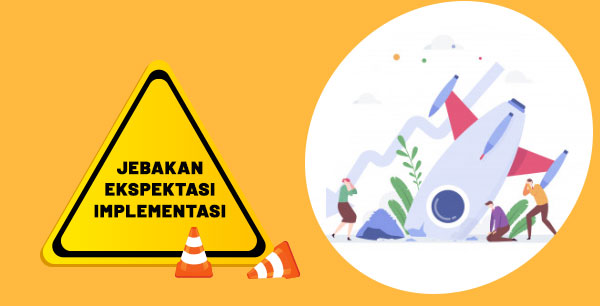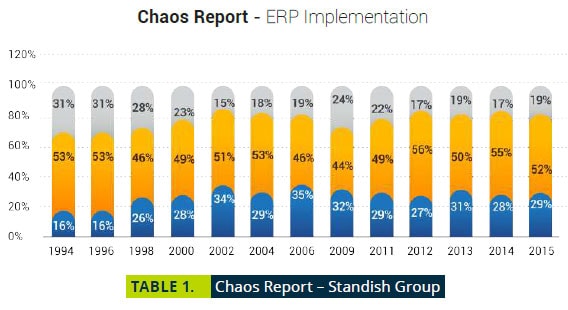The second key of the 8 keys to a successful ERP system implementation is about expectations. In ERP implementations, this expectation trap is more likely to occur as over expectation.
Let’s look back at the data from the Chaos Report, where about 50% of ERP implementation projects end up with a status of “Challenge”.
Where one of the definitions of challanges is, the Features & Functions of the new system are not as expected.
The question becomes important, do we already know the needs or expectations we want before buying a new system?
It is very important for us to know all the problems that exist and what are we expecting when we buy an IT system.
This is very important because without clear expectations, it will usually lead to disappointment.
In this case, usually the party who builds the IT system will be the party to blame, even though the implementation of the new ERP system is not only about IT, but also includes changes in business processes, changes in how teams work within the company, and the last is a matter of technical IT. The three of them must go hand in hand.
Before going deeper into the ERP Implementation, we need to make discretion, which one is a need and which one is a desire.
If companies are able to define their needs, they will find the solutions easily.
On the other hand, if a company does not know what their needs are, then they will be stuck with what they want, so that even if they get something, that will not answer their needs.
Time is another pretty dangerous trap.
Lack of understanding of an ERP project (be it a SAP Business One implementation project, Oracle NetSuite, Microsoft Nav or an open source like Odoo) often causes top management to make unilateral decisions in deciding the project duration (Underestimating Project Complexity).
This can be seen from the Management’s desire to implement ERP in a short time, for example by assuming that the company is relatively simple, the implementation of the 6 months system can be done in 3 months.
Of course, assumptions can be right or wrong.
It is better to discuss this in detail with a helping party such as an ERP consultant who will be used.
Unfortunately ERP consultants often fall into this trap too.
Because he/she wanted to get a project, a request for proposal correction from 6 months to 3 months was accepted so that it could be approved by top management.
Of course this could be the cause of the project delay in the future, rather than completed in 3 months.
7 other key points that influence the success of ERP system implementation::
List all requirements from each department … NEEDS Not Desires. Since no application is perfect to date, one and the other have their respective strengths and weaknesses, which makes it a challenge whether one fits your needs. If you mix up an important need with a nice to have desire, chances are that your project will end up full of challenges.



